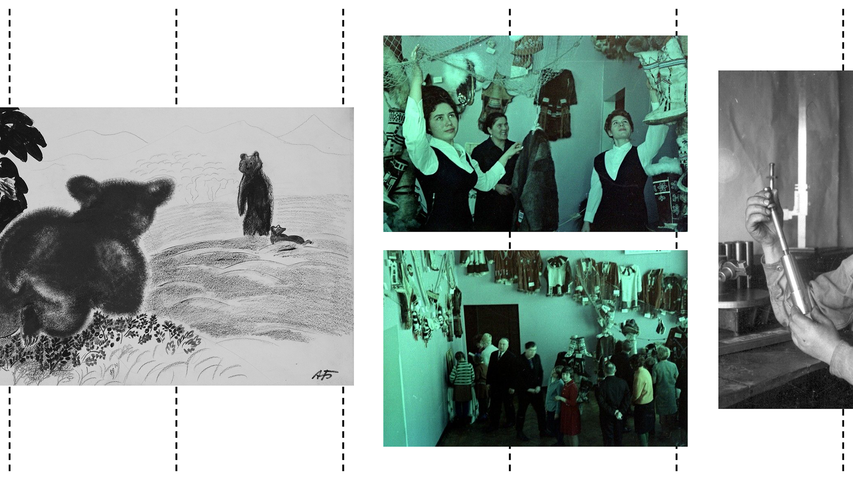The third “wave” of The Coastline Paradox exhibition reveals the phenomenon of Kamchatka’s “island” identity from different sides.
Kamchatka Island
- Date:
- 6–
24 Nov 2024
- Age restrictions
- 6+
Formally, Kamchatka is a peninsula, but its impressive size and the lack of land communications with the rest of Russia make it seem like an island. Inaccessible, almost cut off from the rest of the world, Kamchatka seems to be a place of sanctuary with a uniqueness that requires no legends to back it up, although many legends are told about the region. The peninsula is also the hostage of its own distinctiveness and isolation.

The representation of Kamchatka’s local identity is often reduced to a set of vivid stereotypes: mighty volcanoes and geysers, an abundance of caviar and crabs, brown bears, ash-grey beaches that look like they could be on the moon, figurines of the raven spirit Kutkh sold in souvenir stores, and the song Kamchatka by the band Kino. For an outside observer, the Kamchatka Peninsula is an extreme park where visitors from the mainland can experience an adrenaline rush and acquire new impressions, and then return home. Meanwhile, in reality, life in Kamchatka is much more complicated—there are many valuable and fascinating aspects of local life, history, and culture (of both descendants of indigenous peoples and settlers) that remain hidden from the view of tourists.
In the exhibition, photographs of Bering Island residents from ethnographic expeditions of the last quarter of the 19th century and drawings by local artist Sergey Pasenyuk are juxtaposed with images of the Petropavlovsk shipyard and the people who worked there taken in the 1960s by photographer Gavriil Gaidukevich. A special look at the natural and cultural landscape of the region is offered by Dima Filippov, artist and participant of The Coastline Paradox programme held in Petropavlovsk-Kamchatsky in the spring of 2024. He reimagines tourists’ favourite genre for depictions of Kamchatka—the landscape. The work of artists Vyacheslav Mizin and Filipp Krikunov refers to searches for alternative ways of constructing identity—for example, through the project of a local history museum in the village of Paratunka.




